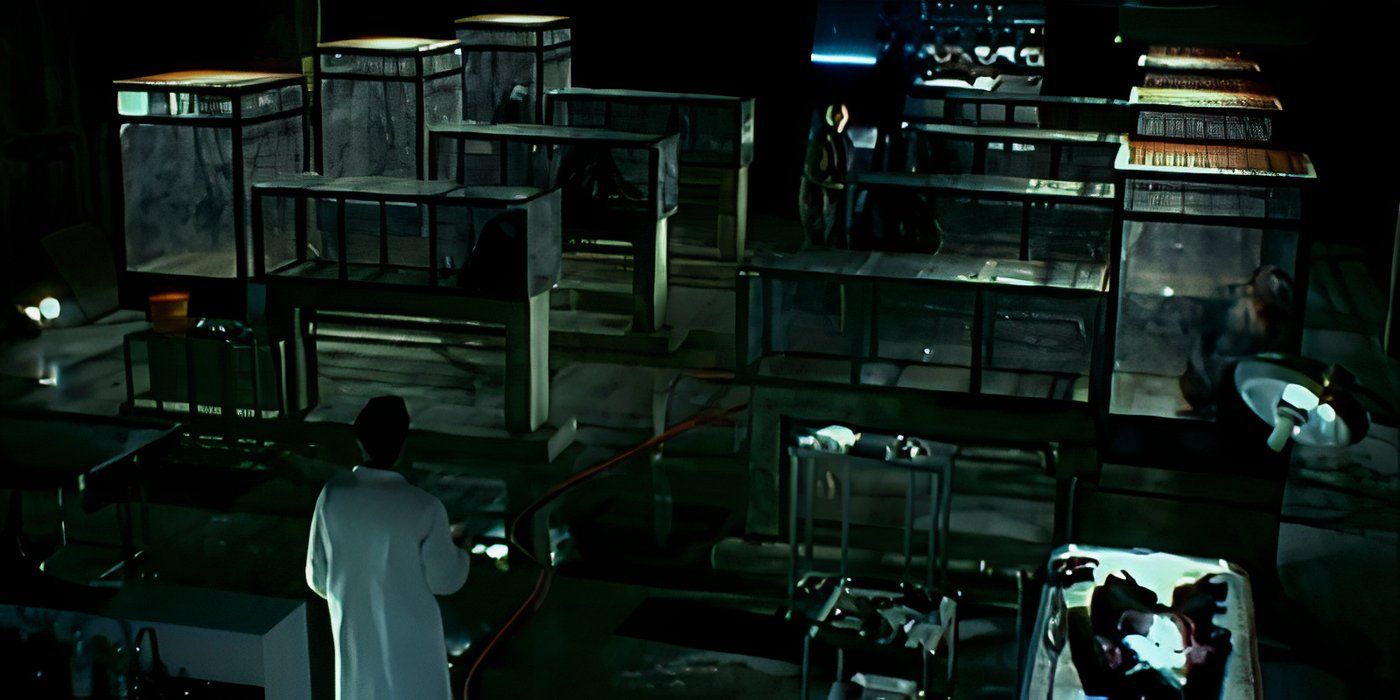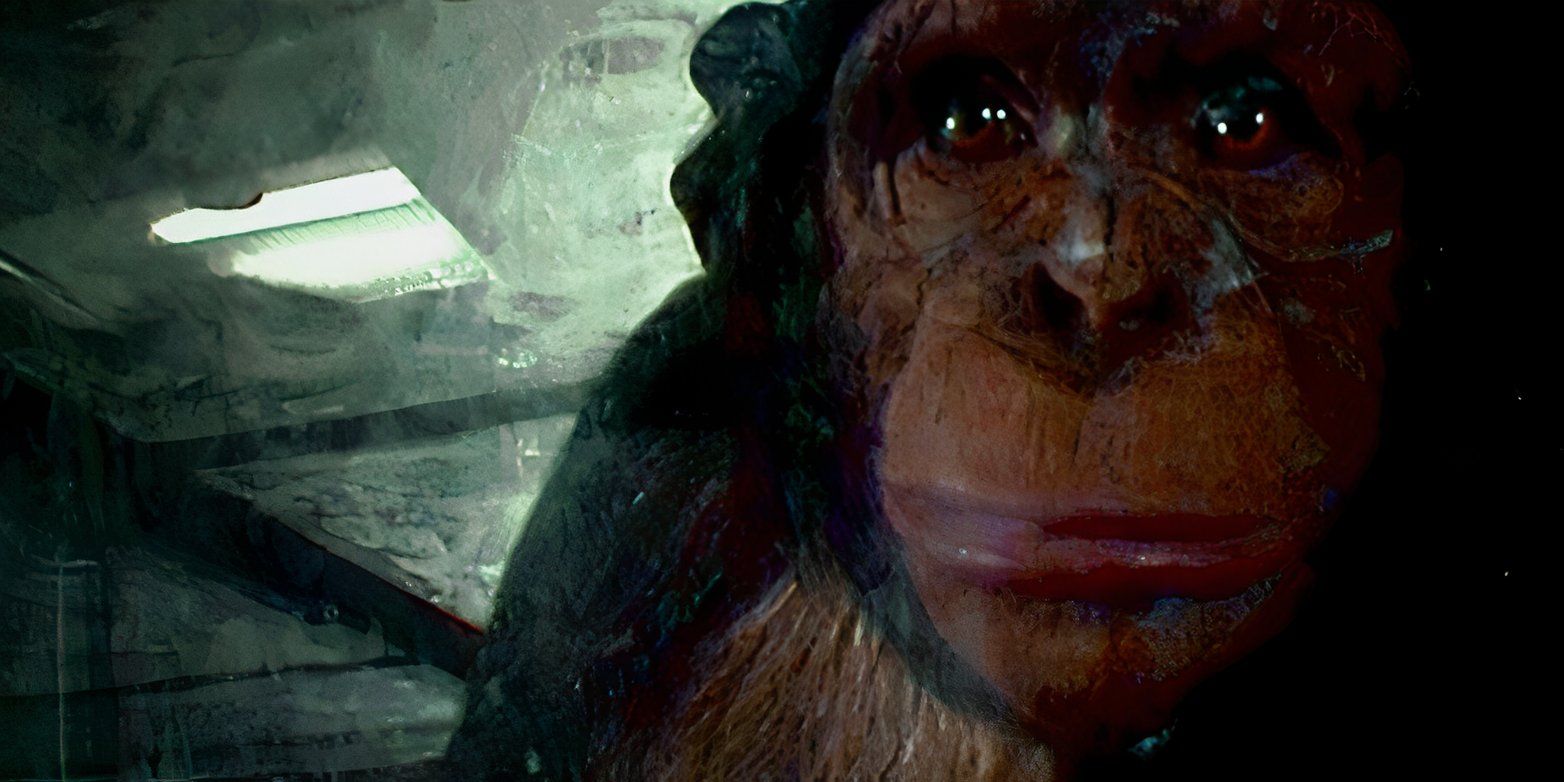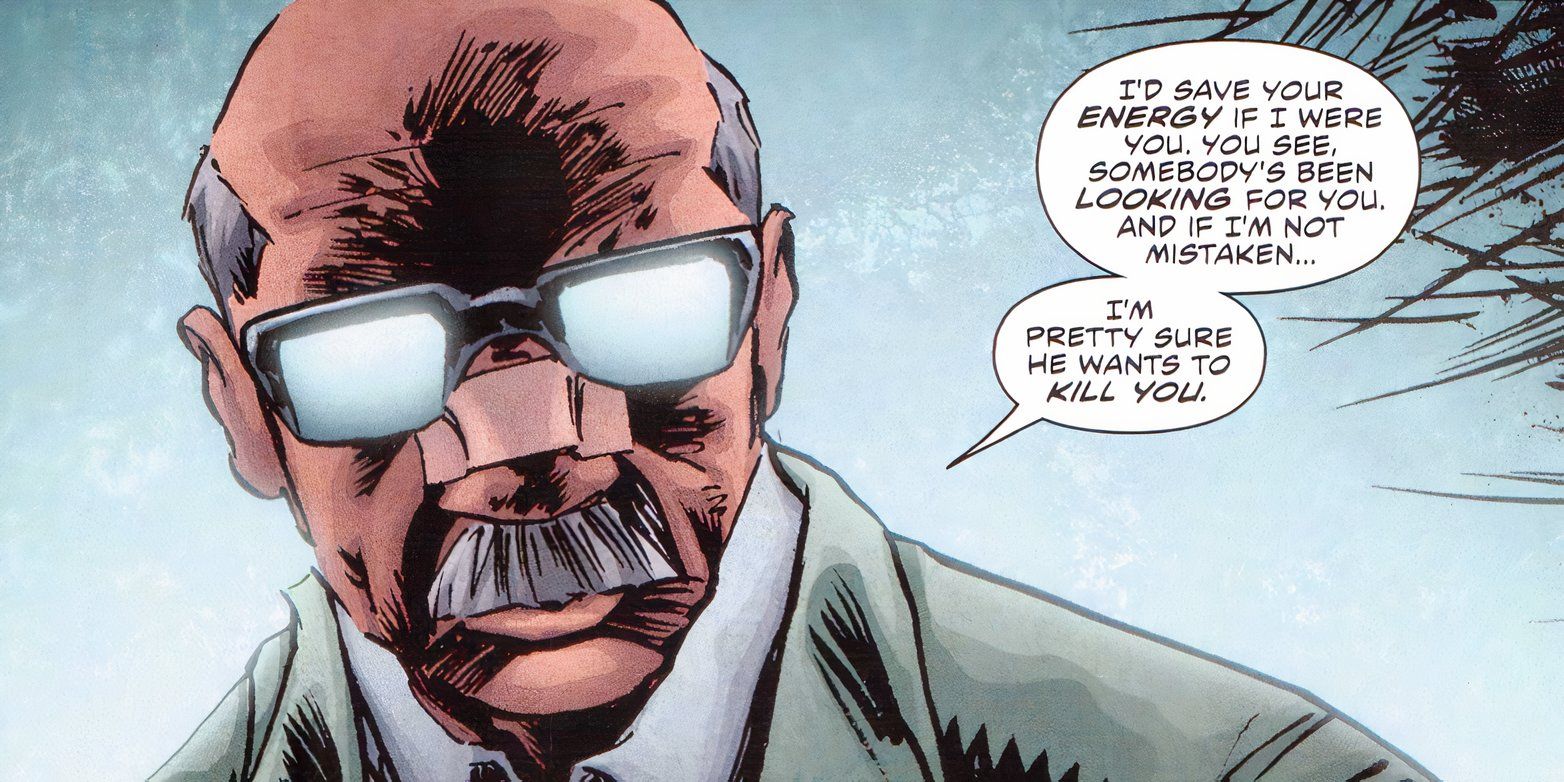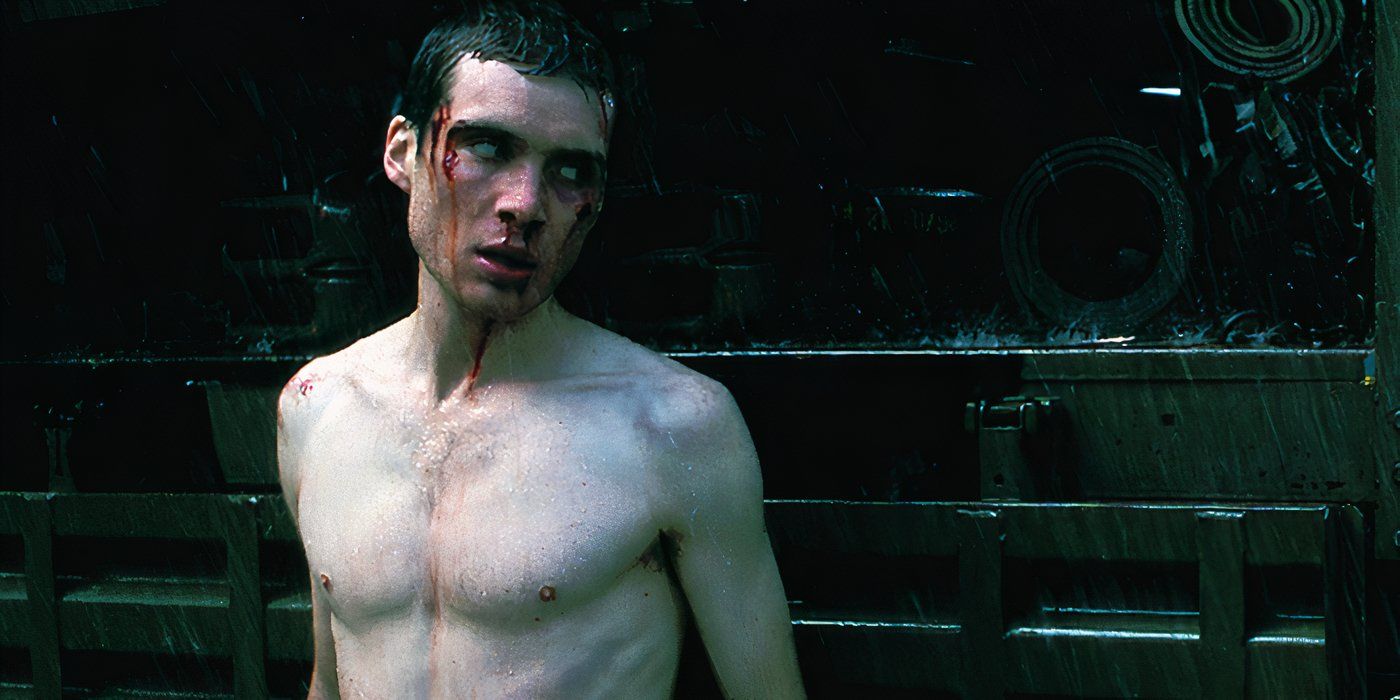While it’s not technically a zombie movie, 28 Days Later revolutionized the zombie horror genre by introducing new tropes and changing the way horror was created. While it does still use jump scares, they’re less frequent and genuinely shocking, and most of the horror is based on circumstances and the depravity of humanity. As a character-driven horror film, it spends an equal amount of time on the dire situation created by people being infected by the Rage Virus and the desperation experienced in trying to survive the selfish and perverted instincts of a few surviving soldiers.
Just like 28 Weeks Later, the underrated sequel to 28 Days Later, the latter features an unforgettable opening scene that introduces viewers to the Rage Virus, which will spread across the UK in the 28 days preceding the film’s main events. It also introduces the central conundrums of the movie, as well as the frenetic editing style that has made 28 Days Later such an inspiration for horror movies since its release 23 years ago. 28 Days Later is finally streaming on Hulu since 28 Years Later just released in theaters, allowing new audiences to watch the unforgettable opening scene.
28 Days Later’s Outbreak Started With Activists Freeing Infected Chimpanzees From A Lab
They Have Good Intentions, But Are Careless
28 Days Later begins in a primate research facility where chimpanzees are subjects of experiments. A group of activists breaks into the lab to rescue the chimpanzees. There are no hints as to the nature of the experiment, but the chimpanzees seem quite aggressive. The activists are scrambling for the means to free them, and trying to figure out a plan of escape.
Just as the first of the chimpanzees is being freed, a doctor walks into the light. He had been in the room for a while, but hadn’t noticed the activists and vice versa. When he’s about to make a phone call, one of the activists stops him, and he asks them to let the chimpanzees be. The experiment has made them both dangerous and infectious, and human contact must be avoided at all costs.
While he does say that the chimps have been injected with something called the Rage Virus that unlocks unbridled, homicidal rage in them, he can’t explain everything before one of them gets free and bites one of the activists. The activist then almost immediately starts contorting and throwing up blood, after which she goes and attacks one of her fellow activists, who starts behaving the same way after ingesting some of the blood dripping from her mouth.
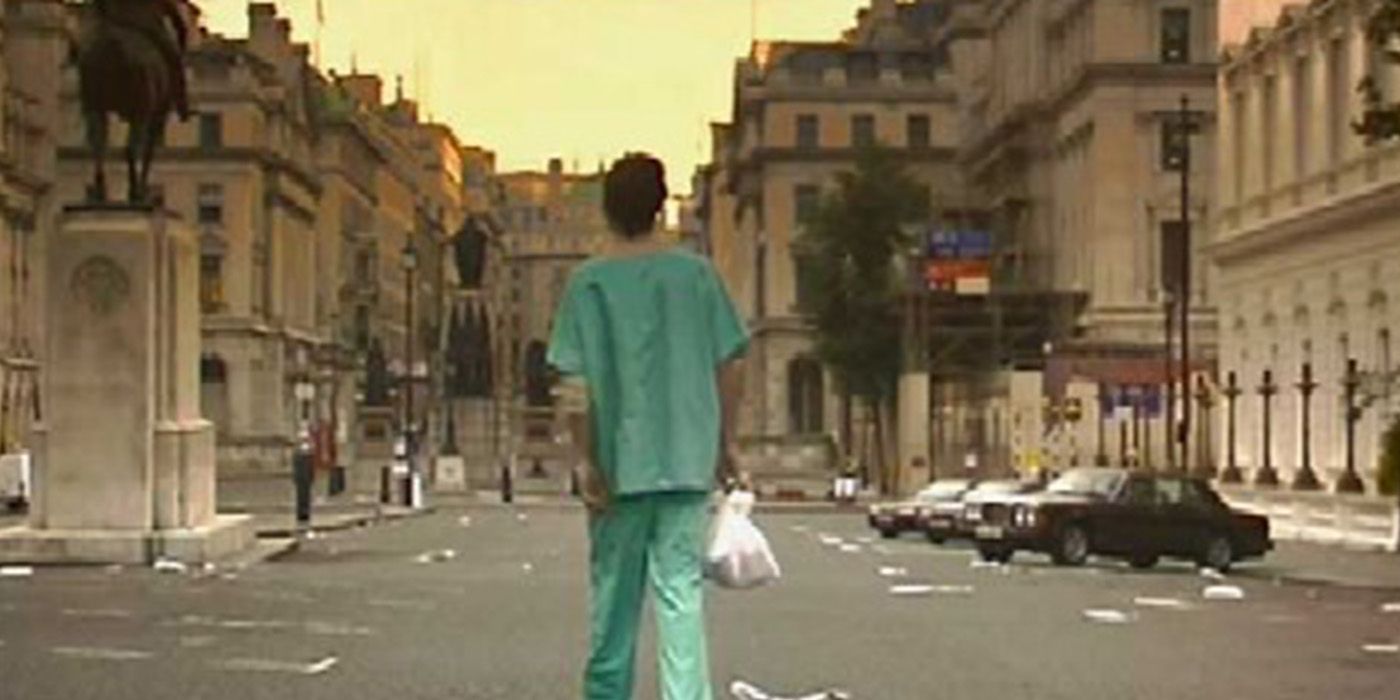
Related
Cillian Murphy’s Oscars Buzz Is Hilarious When You Remember His Very First Breakout Scene
Actor Cillian Murphy is positioned to win an Academy Award for his work in 2023’s Oppenheimer. However, his first major movie makes things funny.
The doctor and the remaining activists watch in horror as the two infected activists start exhibiting unprecedented levels of anger and violence and start attacking the other activists. One of them even attacks the doctor, just after he has managed to send a warning call out, and then the screen cuts to black, implying that the infection has spread everywhere.
The title card, 28 Days Later, lets viewers know that four weeks have passed since the outbreak and the UK they’re about to see has experienced a countrywide outbreak of the virus. Despite their good intentions, the activists doomed humanity by allowing the virus to leave the confines of the lab. The first scene of the movie depicts in great detail what happens if someone gets infected with the virus, setting expectations for what viewers will see throughout the rest of the movie.
The movie also jumps into action surprisingly quickly after periods of calm and regularity.
By jumping straight into the action, 28 Days Later sets the tone for what’s to come in the film, as the movie also jumps into action surprisingly quickly after periods of calm and regularity. You never see the danger and the action coming until the quickly cut handheld shots, the high-octane background score, and the horde of Rage-infected people start swarming and attacking the main characters during the film.
The Scientist In 28 Days Later’s Opening Scene Is Sympathetic, Despite Doing Unethical Science
He Tries Stopping The Outbreak That He Is Responsible For Making Possible
The scientist in the opening scene of 28 Days Later plays a morally dual role. He tries to inform the activists of the side effects of the Rage Virus while trying to inform the authorities of the break-in. However, the Rage Virus wouldn’t have existed if he hadn’t created it and infected the chimpanzees with it in the first place.
In a haunted state, the scientist repeats a line that sums up the unethical practices in the primate research facility. He says that to create a cure, they needed to create a virus. So, not only is the Rage Virus of human origin, but it was also intentionally administered to study the strength of a possible cure to a disease that doesn’t naturally exist in the world.
The Rage Virus in 28 Days Later is based on the Ebola Virus, which inspired writer Alex Garland and director Danny Boyle to explore people’s fear about a viral outbreak instead of making a typical zombie film.
While there might have been a real disease that the cure to the Rage Virus would have helped inoculate people against, that isn’t mentioned in the opening scene of 28 Days Later, or anywhere else in the movie. It isn’t until the ending of 28 Weeks Later that a real vaccine for the Rage Virus becomes a real possibility, but that doesn’t pan out either.
Yet, despite his unethical scientific practices, the scientist in 28 Days Later‘s opening scene is a sympathetic character, as he makes every effort imaginable to help stop the outbreak. He is easily overpowered by the activists and has no chance of escaping once they start getting infected. However, he makes a sincere effort to explain the consequences of an outbreak and discourages the activists from releasing the chimpanzees.
There are multiple chimpanzees in the facility, possibly with varying degrees of infection, but even one breaking out and infecting a human would inevitably cause a countrywide outbreak. The scientist doesn’t have enough time to explain the nature of the virus to the impatient activists who naturally perceive him as a representative of an oppressive organization they want to stop, who deserves no say in the matter.
While the activists are very enthusiastic, it is impossible not to feel like they’re somewhat irresponsible in their activism. As a viewer, the situation is quite confusing, because freeing chimpanzees from being unethically experimented on is a noble effort. However, the possibility of an outbreak, especially of a disease with as horrifying consequences as are revealed within seconds of the first activist getting infected, makes it difficult to sympathize with their lack of patience.
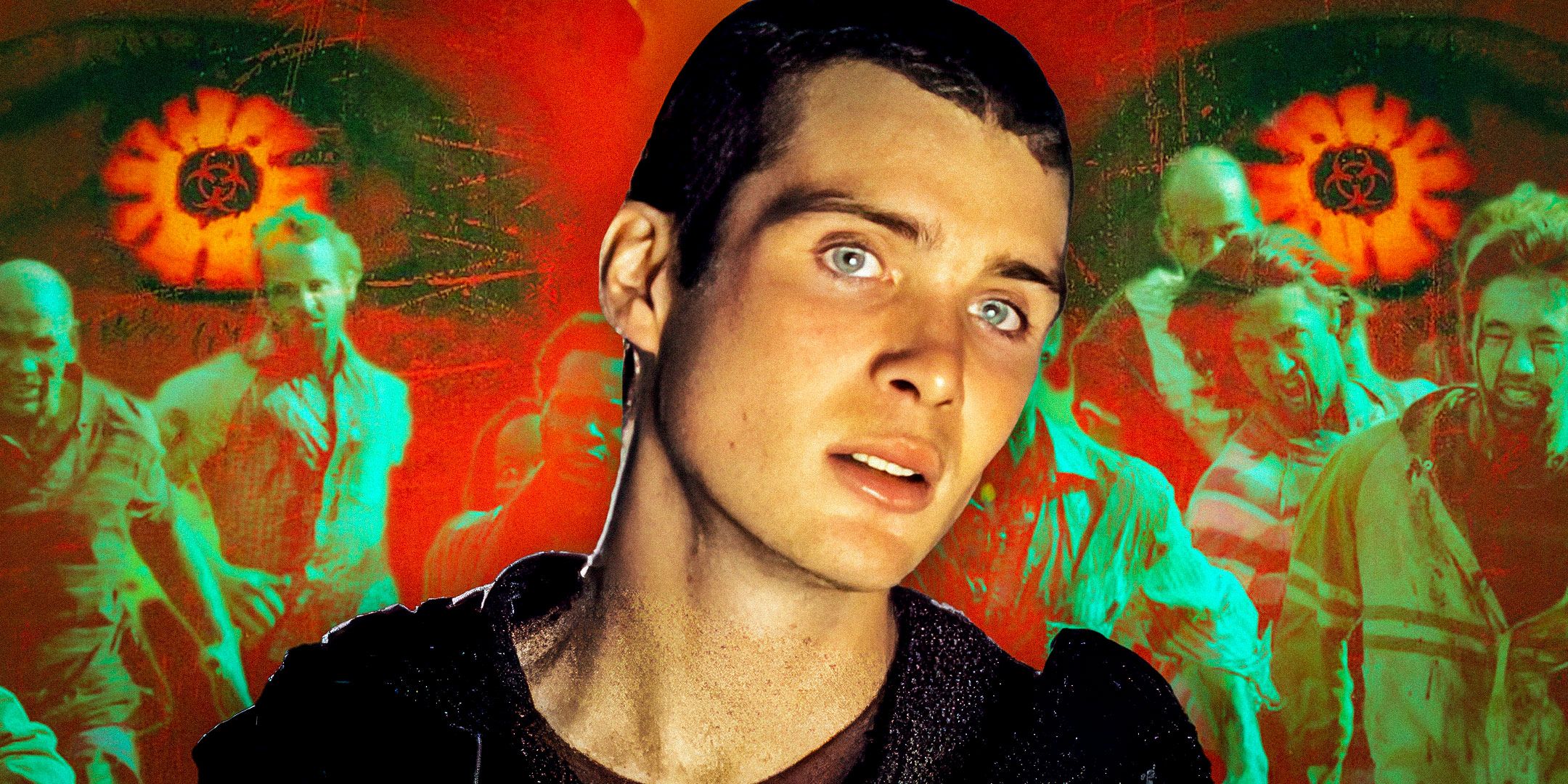
Related
28 Days Later’s Rage Virus Explained: How It Works, Immunity & New Evolutions
The danger in 28 Days Later is a terrifying rage virus that puts a unique new twist on the concept of zombies and makes the franchise stand out.
Similarly, the scientist’s efforts in trying to stop the outbreak will make viewers feel sympathy for his frantic urge to communicate with the activists. However, the unspoken fact that he actively played a part in creating the Rage Virus and infecting the chimpanzees with it makes it difficult to ignore his negative role in the proceedings. 28 Days Later‘s opening scene introduces the audience to the themes it will explore in greater detail later in the film.
28 Days Later’s Outbreak Is Further Detailed In The Graphic Novels
They Explain The Origins Of The Virus
28 Days Later has four different endings, and the graphic novels not only confirm which of them are canon, expanding on the story told in the film. While most of them focus on the events that happen after the film ends, exploring the lives of the characters that survive until the end of the movie, a few of them also go into further detail about the start of the Rage Virus outbreak.
There are multiple explanations offered for the origin of the Rage Virus and the nature of the experiments being performed on the chimpanzees in the lab. 28 Days Later: The Aftermath, the graphic novel that bridges the gap between 28 Days Later and 28 Weeks Later, for instance, continues with the explanation offered by the scientist in 28 Days Later‘s opening scene.
Scientists Clive and Warren, who worked at the Cambridge Primate Research Center, were attempting to create a rage inhibitor.
28 Days Later: The Aftermath reveals that the Rage Virus was created accidentally as an unintended consequence of another experiment. Scientists Clive and Warren, who worked at the Cambridge Primate Research Center, were attempting to create a rage inhibitor to help people with their anger management issues, which were getting worse with the collective anxieties of the population during the early 2000s.
However, the 28 Days Later comics reveal a more sinister backstory. Dr. Billingsworth implies that the Rage Virus was developed as a biological weapon. The comics also change the point of origin, so that the viral outbreak starts in London instead of Cambridge. The scientist’s words in 28 Days Later‘s opening scene interestingly agree with both interpretations. He says that one must develop a disease in order to create a cure, thus suggesting that the intention was to create a cure, but the intentional development of the disease is more in agreement with the biological weapon explanation.
How 28 Days Later’s Opening Scene Plays With The Movie’s Themes Of Good & Evil
It Sets Up The Main Themes Of The Movie
While we still mostly have speculation about what happens to Cillian Murphy’s Jim in 28 Days Later‘s ending, the one thing known for sure is that his arc and the main storyline of the movie deals with themes of good and evil and what distinguishes good people from evil people. While it is a “zombie” movie, 28 Days Later primarily explores the nature of humanity in its second half.

Related
Every 28 Days Later Movie Ranked, Including 28 Years Later
There have been three movies in the Rage Virus-driven “28 Days Later” franchise, all of which are good — but which one stands out as the best?
Harsh realities, from forced euthanasia to the prioritization of self-preservation, are depicted and addressed from the beginning of 28 Days Later, but the second half is even darker than the first. The Salvation Army’s promise of a cure and subsequent radio broadcast was a false proclamation made to bring women to their camp, and they could repopulate the Earth after the infected had starved to death.
Thus, using the circumstances created by an outbreak resembling a zombie apocalypse, 28 Days Later actually explores the nature of humanity. The depravity of the soldiers is contrasted against Jim’s attempts to protect and rescue Hannah and Selena, risking his life to do so. Similarly, 28 Days Later‘s opening scene plays with the themes of good and evil by following well-intentioned activists who accidentally cause a viral outbreak and juxtaposing them with the desperate attempts of an unethical scientist to stop their activities.



